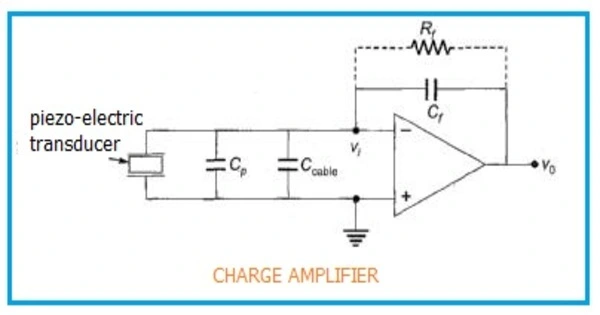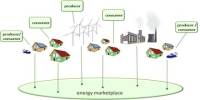A charge amplifier is an electronic amplifier that amplifies the electrical charge produced by a sensor or transducer, such as a piezoelectric sensor or a capacitive sensor. It is a type of electronic current integrator that generates a voltage output proportional to the integrated value of the input current, or total charge injected. It converts the charge output of the sensor into a voltage signal that can be further processed by other electronic circuits or systems.
The amplifier uses a feedback reference capacitor to offset the input current and produces an output voltage that is inversely proportional to the value of the reference capacitor but proportional to the total input charge flowing during the specified time period. As a result, the circuit functions as a charge-to-voltage converter. The circuit’s gain is determined by the values of the feedback capacitor. Walter Kistler invented the charge amplifier in 1950.
Charge amplifiers typically consist of an operational amplifier (op-amp), a feedback capacitor, and a feedback resistor. The input charge signal is converted into a voltage signal by the feedback capacitor, which is connected in parallel to the feedback resistor. The op-amp amplifies the resulting voltage signal, which is proportional to the input charge signal, and outputs it to a load or further signal processing circuitry.
Charge amplifiers are commonly used in applications that require high sensitivity and low noise, such as in accelerometers, pressure sensors, and vibration sensors. They typically have high input impedance, low output impedance, and a wide bandwidth.
The basic operation of a charge amplifier involves amplifying the charge signal produced by the sensor and converting it to a voltage signal using a feedback capacitor. The feedback capacitor acts as an integrator, converting the charge signal to a voltage signal proportional to the charge input. Overall, charge amplifiers play a crucial role in signal conditioning and amplification for a wide range of sensor applications.
Charge amplifiers are designed to have high input impedance, low noise, and high accuracy, which makes them suitable for applications where the input signal is small and the noise level is high. They can also be used to measure dynamic signals, such as in shock and vibration testing, where fast response and accuracy are crucial.
















